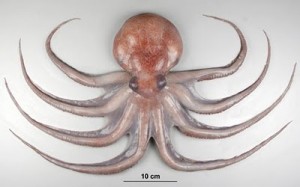
March 31, 2012

Will anyone pull any good April Fools’ jokes in 2012? Will they join the list of all time infamous ones?
I did find it amusing in 2011 that Anomalist Books pulled a fast one, and said I was “Loren Coleman, author of Birds I Have Known Both Here and in the Great Beyond.”
On Sam The Monsterman’s Sea Monsters site, Aquabeasties, in 2011, he made an announcement that scientists finally proved Nessie does not exist. Cryptozoologically-themed April Fools’ jokes usually involve definitive proof of a monster’s existence, but Sam wanted to do something less disappointing. Plus, he felt everyone is always saying you can’t prove water monsters don’t exist.
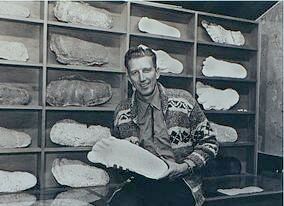
Hands down, probably the one that should be ranked #1 in Bigfoot history, as the “best original April Fools’ joke,” is the one pulled by John Green on April 1, 1955. See the details, here: “The First April Fools’ Sasquatch Joke.”
In 2007, the Museum of Hoaxes published a list of the top 100 April Fools’ Jokes of all time. I’ve picked out the top ones of those April Fools’ pranks, which have a seemingly cryptozoological theme. I was happy to see there were only the following four on the list.

#9: Hotheaded Naked Ice Borers
In its April 1995 issue Discover Magazine announced that the highly respected wildlife biologist Dr. Aprile Pazzo had discovered a new species in Antarctica: the hotheaded naked ice borer. These fascinating creatures had bony plates on their heads that, fed by numerous blood vessels, could become burning hot, allowing the animals to bore through ice at high speeds. They used this ability to hunt penguins, melting the ice beneath the penguins and causing them to sink downwards into the resulting slush where the hotheads consumed them. After much research, Dr. Pazzo theorized that the hotheads might have been responsible for the mysterious disappearance of noted Antarctic explorer Philippe Poisson in 1837. “To the ice borers, he would have looked like a penguin,” the article quoted her as saying. Discover received more mail in response to this article than they had received for any other article in their history.
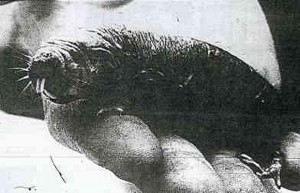
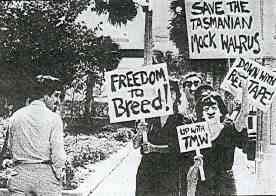
#43: Tasmanian Mock Walrus
In 1984 the Orlando Sentinel featured a story about a creature known as the Tasmanian Mock Walrus (or TMW for short) that many people in Florida were adopting as a pet. The creature was only four inches long, resembled a walrus, purred like a cat, and had the temperament of a hamster. What made it such an ideal pet was that it never had to be bathed, it used a litter box, and it ate cockroaches. In fact, a single TMW could entirely rid a house of its cockroach problem. Reportedly, some TMWs had been smuggled in from Tasmania, and there were efforts being made to breed them, but the local pest-control industry was pressuring the government not to allow them into the country, fearing they would put cockroach exterminators out of business. Dozens of people called the paper trying to find out where they could obtain their own TMW. A picture of the Tasmanian Mock Walrus was included with the article, but what the picture actually showed was a real creature—the Naked Mole Rat. The Tasmanian Mock Walrus was entirely fictitious.
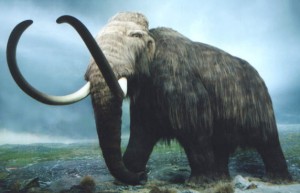
#45: Retrobreeding the Woolly Mammoth
In 1984 Technology Review published an article titled “Retrobreeding the Woolly Mammoth” that described an effort by Soviet scientists to bring the woolly mammoth species back from extinction. The technique being used was the insertion of DNA from woolly mammoths found frozen in Siberian ice into elephant cells. The cells were then brought to term inside surrogate elephant mothers. The head of the project was said to be Dr. Sverbighooze Yasmilov. The story was widely reported as a factual event.

#74: The Musendrophilus
In 1975 the famous naturalist David Attenborough reported on BBC Radio 3 about a group of islands in the Pacific known as the Sheba Islands. He played sound recordings of the island’s fauna, including a recording of an alleged night-singing tree mouse called the Musendrophilus. He also described a species whose webbed feet were prized by inhabitants of the island as reeds for musical instruments. Unfortunately, the night-singing tree mice were merely products of Attenborough’s imagination, perhaps inspired by that old yarn about the Tree Squeaks, that North American species which lives high in the trees and squeaks every time the wind blows.
About Loren Coleman
Loren Coleman is one of the world’s leading cryptozoologists, some say “the” leading living cryptozoologist. Certainly, he is acknowledged as the current living American researcher and writer who has most popularized cryptozoology in the late 20th and early 21st centuries.
Starting his fieldwork and investigations in 1960, after traveling and trekking extensively in pursuit of cryptozoological mysteries, Coleman began writing to share his experiences in 1969. An honorary member of Ivan T. Sanderson’s Society for the Investigation of the Unexplained in the 1970s, Coleman has been bestowed with similar honorary memberships of the North Idaho College Cryptozoology Club in 1983, and in subsequent years, that of the British Columbia Scientific Cryptozoology Club, CryptoSafari International, and other international organizations. He was also a Life Member and Benefactor of the International Society of Cryptozoology (now-defunct).
Loren Coleman’s daily blog, as a member of the Cryptomundo Team, served as an ongoing avenue of communication for the ever-growing body of cryptozoo news from 2005 through 2013. He returned as an infrequent contributor beginning Halloween week of 2015.
Coleman is the founder in 2003, and current director of the International Cryptozoology Museum in Portland, Maine.
Filed under Breaking News, Conspiracies, Cryptomundo Exclusive, CryptoZoo News, Cryptozoology, Folklore, Hoaxes, Media Appearances, New Species, Pop Culture, Sea Serpents